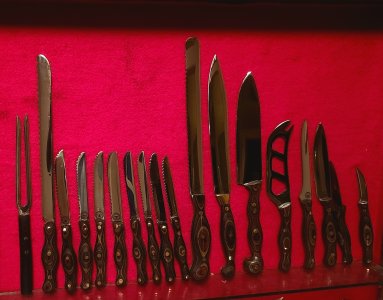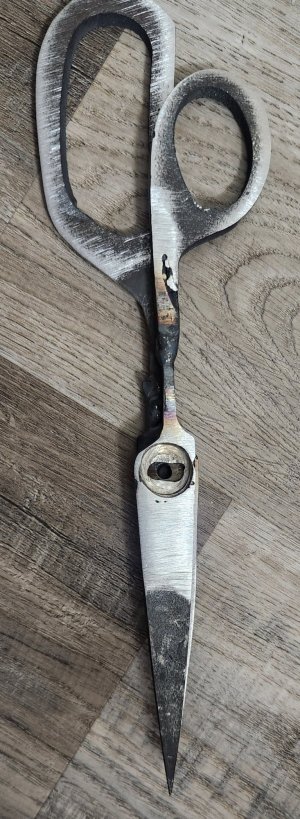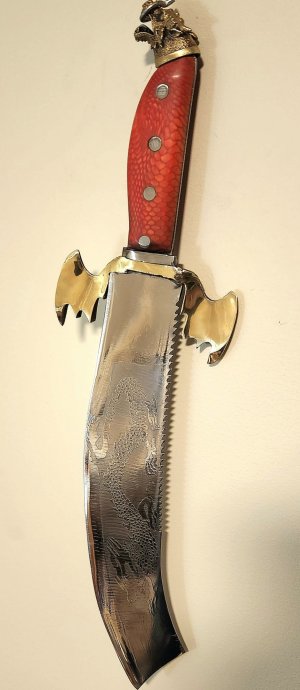-
Scam Alert. Members are reminded to NOT send money to buy anything. Don't buy things remote and have it shipped - go get it yourself, pay in person, and take your equipment with you. Scammers have burned people on this forum. Urgency, secrecy, excuses, selling for friend, newish members, FUD, are RED FLAGS. A video conference call is not adequate assurance. Face to face interactions are required. Please report suspicions to the forum admins. Stay Safe - anyone can get scammed.
-
Several Regions have held meetups already, but others are being planned or are evaluating the interest. The Calgary Area Meetup is set for Saturday July 12th at 10am. The signup thread is here! Arbutus has also explored interest in a Fraser Valley meetup but it seems members either missed his thread or had other plans. Let him know if you are interested in a meetup later in the year by posting here! Slowpoke is trying to pull together an Ottawa area meetup later this summer. No date has been selected yet, so let him know if you are interested here! We are not aware of any other meetups being planned this year. If you are interested in doing something in your area, let everyone know and make it happen! Meetups are a great way to make new machining friends and get hands on help in your area. Don’t be shy, sign up and come, or plan your own meetup!
You are using an out of date browser. It may not display this or other websites correctly.
You should upgrade or use an alternative browser.
You should upgrade or use an alternative browser.
Blade smithing
- Thread starter Chris Cramer
- Start date
@Chris Cramer are you set up to forge/laminate (whatever the right word is) 'dissimilar' alloy materials in a blade blank?

 knifewear.com
knifewear.com

Japanese Layered Steel: San-Mai, Warikomi, Mono-steel, and Other Knife
We love Japanese knives. They’re beautiful, many of them are handmade, and they tend to get sharper and hold their edge for longer than conventional kitchen knives. You may ask, “But why do they stay sharp longer?” Because they’re made out of harder steel, of course! The steel your knife is made...
Chris Cramer
Super User
Laminating with forge welding is best done with a hydraulic press, or a power hammer. I don't have either of these tools, and my propane forge uses a lot of gas to reach forge welding temperatures. I believe laminated blades could be a great way of protecting carbon steel blades with stainless steels. It's not the same as Damascus steel but quite a few people think Damascus is the best type of steel, when it is simply two or three types of standard high carbon steels like 1084 and 15n20 forge welding over and over.
I wandered over to knife steel nerds but didn’t spend much time there, yet. I’ve watched my fair share of forged in fire so I’m an “armchair expert” like every body elseThe general rule of thumb is higher hardness means lower toughness, but over the years there have been discoveries that have engineered steels with balanced properties of hardness, toughness, and corrosion resistance. Those are the three general metal properties. Standard high carbon low alloy steels that are easiest to forge such as 1084, 1095, and 15n20 have decent toughness but low hardenability because the hardness comes ony from added carbon. The added carbon creates iron carbide which is the softest type of carbide.
High alloy tool steels contain alloys that provide more hardenability. High alloy steels with high Vanadium and tungsten fall under high speed steels because Vanadium carbides and tungsten xarbides are the hardest types of carbide
One of the biggest inventions that has brought more toughness into extremely hard steels is powder metallurgy. Powdered metallurgy technology reduces the size of the carbides in the carbide structure of the steel. In return, the fine carbide structure makes the steel much tougher.
If you look up knife steel ratings on Google and go to knife steel nerds, you can read an excellent article about different ratings and some tables on the ratings of different steels.
Moderator Edit - I think this is what you wanted us to see. https://knifesteelnerds.com/2021/10...ness-edge-retention-and-corrosion-resistance/
Knives are tools- how much does spine thickness affect slicing? Are heavier blades more prone to being reduced to camp chores? Why are some blades serrated on one side yet flat ground on the other?
For some reason I’m now a knife collector and not understanding the reason behind some of the design choices
Chris Cramer
Super User
The spine thickness greatly effects the strength, the weight, and the flexibility of the blade. The bevel and the edge are what effect how well the blade slices the most, but a thicker edge will also make it more difficult for the blade to pass through the material. An ax has a thick spine and a wide angle edge to easily split the wood, and gives it high durability.I wandered over to knife steel nerds but didn’t spend much time there, yet. I’ve watched my fair share of forged in fire so I’m an “armchair expert” like every body else
Knives are tools- how much does spine thickness affect slicing? Are heavier blades more prone to being reduced to camp chores? Why are some blades serrated on one side yet flat ground on the other?
For some reason I’m now a knife collector and not understanding the reason behind some of the design choices
A thick spine prevents deflection of the blade and adds mass to assist with chopping tasks, such as an axe or machete. Most tools of this nature will have a convex or obtuse Vee edge to split materials apart. Conversely, knives with thin spines will generally be more flexible and suitable for controlled slicing motions and will feature an acute bevel edge to part materials more efficiently much like a filet knife or boning knife.I wandered over to knife steel nerds but didn’t spend much time there, yet. I’ve watched my fair share of forged in fire so I’m an “armchair expert” like every body else
Knives are tools- how much does spine thickness affect slicing? Are heavier blades more prone to being reduced to camp chores? Why are some blades serrated on one side yet flat ground on the other?
For some reason I’m now a knife collector and not understanding the reason behind some of the design choices
I suspect that the serrated blades that are flat on one side are produced like that because they are easier to manufacture and to maintain in that configuration. That being said, some people really like chisel edge knives and the way that they cut. Many Japanese blades have chisel edges that feature a slight concave on the "flat" side of the blade to prevent the material being cut from sticking to the blade. Additionally, some Western culinary kitchen knives produce the same effect by grinding shallow grooves vertically along the length of the blade.
Chris Cramer
Super User
I finally finished my first set of steak knives, as well as a new machete that I got distracted with while working on the steak knives. Each handle is made of dymalux handle material which s similar to Dimond wood. Several layers of wood fused with resin, which creates a beautiful pattern when made circular. The blades are made of aebl stainless steel which is very affordable, and still has higher hardness toughness and corrosion resistance than almost all carbon steels.
The machete was forged this time since the width is 3 inches and it is still over a foot in total length, so I had to draw it out by forging.
I also decided to challenge myself with a more complicated acid etch. To go well with the handle, I etched a dragon into the face of the blade, I made a brass guard in the shape of some wings, and used the same brass dragon pommel.
The machete was forged this time since the width is 3 inches and it is still over a foot in total length, so I had to draw it out by forging.
I also decided to challenge myself with a more complicated acid etch. To go well with the handle, I etched a dragon into the face of the blade, I made a brass guard in the shape of some wings, and used the same brass dragon pommel.
Attachments
Chris Cramer
Super User

I received a request from a former co-worker for a custom made cleaver. The blade isn't as thick as some heavy cleavers that weigh up to 2 pounds but the metallurgy (CPM Magnacut) and heat treatment gives it high enough edge retention and wear resistance to break rib bones without the blade taking any damage. Despite the thinner blade the large blade gives it decent weight without making your wrist tired which gives assistance by gravity with chopping. The large blade also gives more space for a more complex laser engraving. I purchased the 20W ir laser module for the D1 Pro primarily for engraving aluminum, but it also does a much better job of engraving steel as well.
Last edited:
Chris Cramer
Super User

I finally finished my full set of kitchen knives. This set includes 8 steak knives, an 8 inch chef knife, a 6 inch utility knife, a boning knife, a paring knife, a bird beak paring knife, a cheese knife, a 10 inch meat carving knife a meat carving fork, a 10 inch meat slicing knife, and a 10 inch bread knife.
Each knife is made from aebl high carbon stainless steel, which has the highest rated toughness, high corrosion resistance, and can still be brought to a high hardness for decent edge retention if it is heat treated properly along with cryo treatment.
The handles are still made from dymalux only the color patterns are different than my previous knives.
Very nice set! really beautiful work amazing. How do you create the serrations in the steak knives?
A labor of love obviously, I am curious about approximately how much time did you put into this project?
A labor of love obviously, I am curious about approximately how much time did you put into this project?
Dan Dubeau
Ultra Member
Nice job. Great family heirloom!
Chris Cramer
Super User
Thanks everyone. The serrations are made with a die grinder using a small tapered tungsten burr. Usually the small concave curves are part of the contours when the blade is cut but they still need to be made sharp and tapered with the burr. Now that I have all the codes for these knives It would most likely take about 12 hours to complete the set of steak knives if you include the heat treatment, and roughly 8 hours for each large knife.Very nice set! really beautiful work amazing. How do you create the serrations in the steak knives?
A labor of love obviously, I am curious about approximately how much time did you put into this project?
Heat treatment takes a lot of time since both tempers are held for 2 hours, the hardening heat takes time to reach the setpoint temperature, and cryo treatment in the freezer also takes time. Otherwise It doesn't take long to cut the blade with the plasma table, and I've got good practice in carrying out the sequence for shaping the handles.
Chris Cramer
Super User

Here's a photo of my logo. Since the labels are only 0.45 inches in diameter I changed the layout of the title a bit so the letters would be large enough to read (Custom Multi Metalworks). They are all engraved with the xtool 40w module instead of the 20W ir module, because it leaves more of a permanent mark by engraving into the hardened steel.
Chris Cramer
Super User
Thanks John, I have thought about crafting some other utensils other than just knives. Most kitchn knife sets also include sheers/ scissors, so I'll probably look at some designs of those before I design them on fusion. I could easily make some forks and spoons out of basic stainless steel and add some engravings to those, or try adding some other larger cooking utensils that require alloyed steels and larger handles.Very Nice Chris. Add forks and spoons!
Chris Cramer
Super User

I'm working on a pair of kitchen shears made with s35vn high carbon stainless steel. The blades I cut with my plasma table line up fairly well. I'll definitely need to do some straightening in the handles, but my main concern is the size of the link. Since the thickness of this steel is 3/16" the kurf width of the ark made the size of the rectangle too large. I used a carbide hole saw with my drill press to boar the hole around it but the size of the carbide teeth that cut the metal made the hole non fush with the ends of the rectangle. It could still work if I extend the edges of the rectangle, but I'm looking to get a much cleaner cut.
Would something like this fit inside the chuck of a lathe with the link centered?
140mower
Don
I don't think you could safely hold that in a chuck. But, you could clamp it to a face plate, or maybe a tooling plate that is held in the chuck.View attachment 49969
I'm working on a pair of kitchen shears made with s35vn high carbon stainless steel. The blades I cut with my plasma table line up fairly well. I'll definitely need to do some straightening in the handles, but my main concern is the size of the link. Since the thickness of this steel is 3/16" the kurf width of the ark made the size of the rectangle too large. I used a carbide hole saw with my drill press to boar the hole around it but the size of the carbide teeth that cut the metal made the hole non fush with the ends of the rectangle. It could still work if I extend the edges of the rectangle, but I'm looking to get a much cleaner cut.
Would something like this fit inside the chuck of a lathe with the link centered?
Chris Cramer
Super User
Ah, that makes sense. Depending on the size of my lathe I might have to cut off the handles, and clamp it to a face plate with screws.I don't think you could safely hold that in a chuck. But, you could clamp it to a face plate, or maybe a tooling plate that is held in the chuck.
140mower
Don
And if those tips protrude past the outer edge, be gawd awful careful.......Ah, that makes sense. Depending on the size of my lathe I might have to cut off the handles, and clamp it to a face plate with screws.
140mower
Don
Or........ This might be a fine time to upgrade to something a little bit bigger. Keep those spinning razors safely at bay. What better excuse to upgrade than safety. 🙄😛Ah, that makes sense. Depending on the size of my lathe I might have to cut off the handles, and clamp it to a face plate with screws.
If you need anymore benefits of a bigger machine to slip it past the purchasing department, I am sure we can come up with some good ones over the next few days, while you shop......😎


